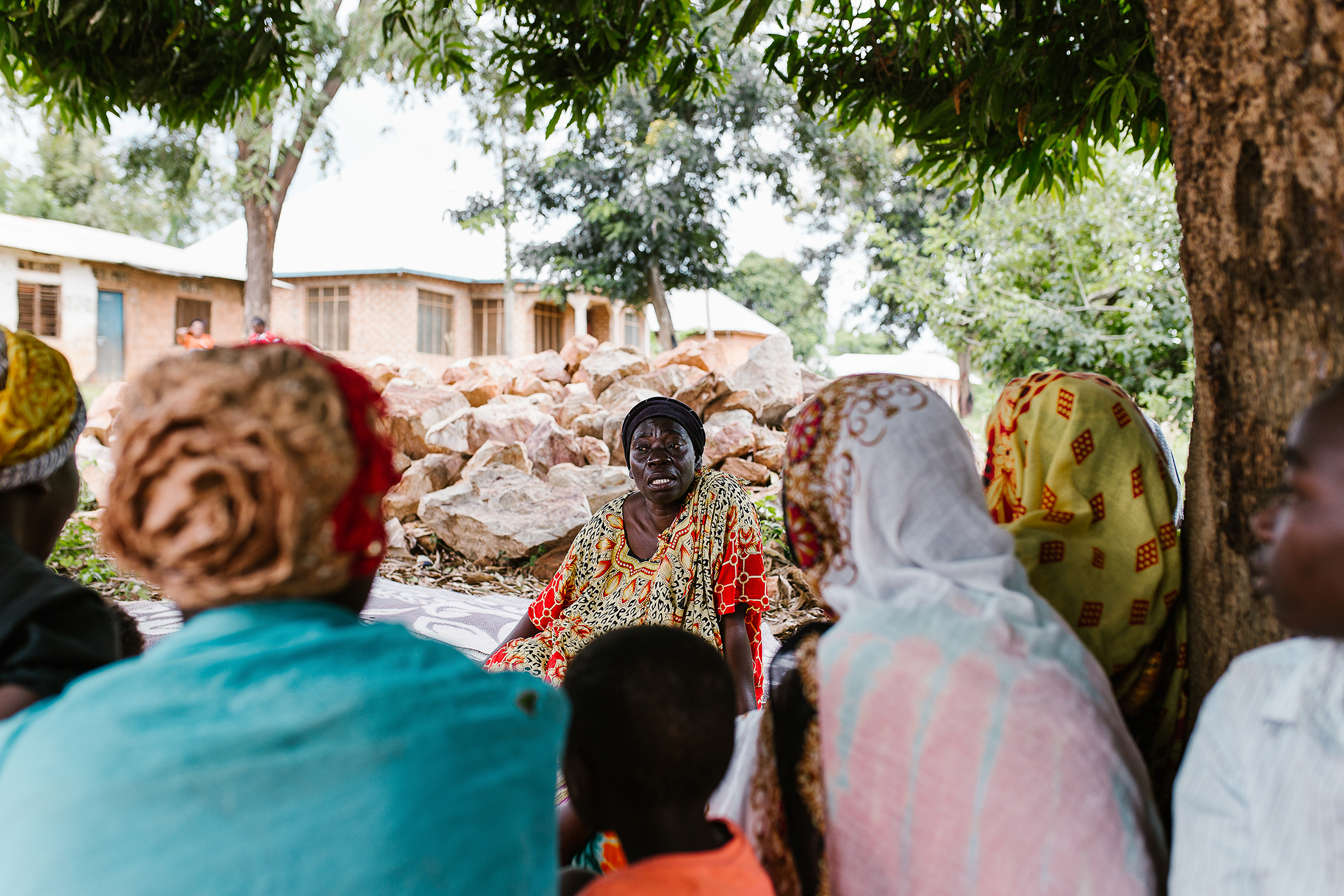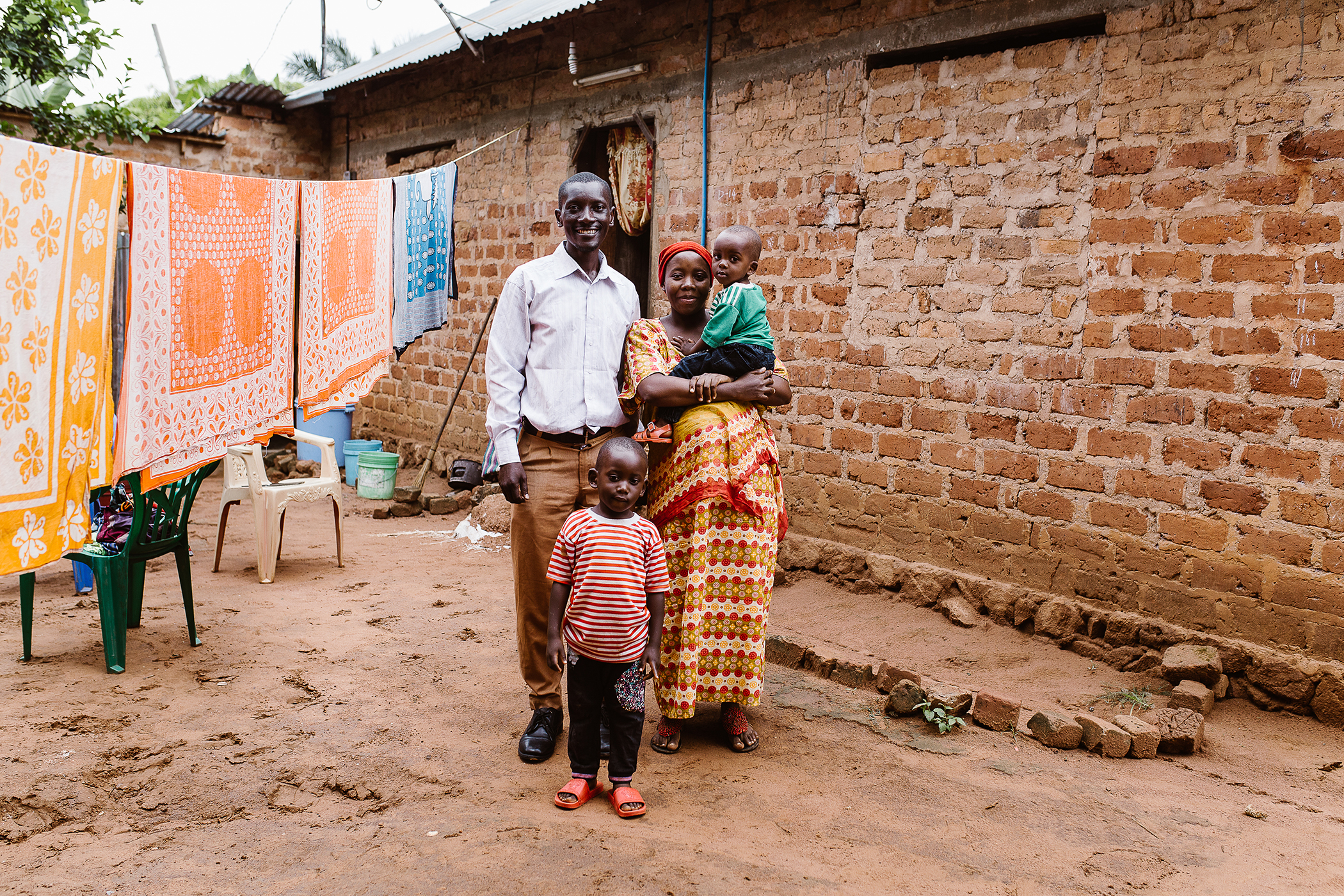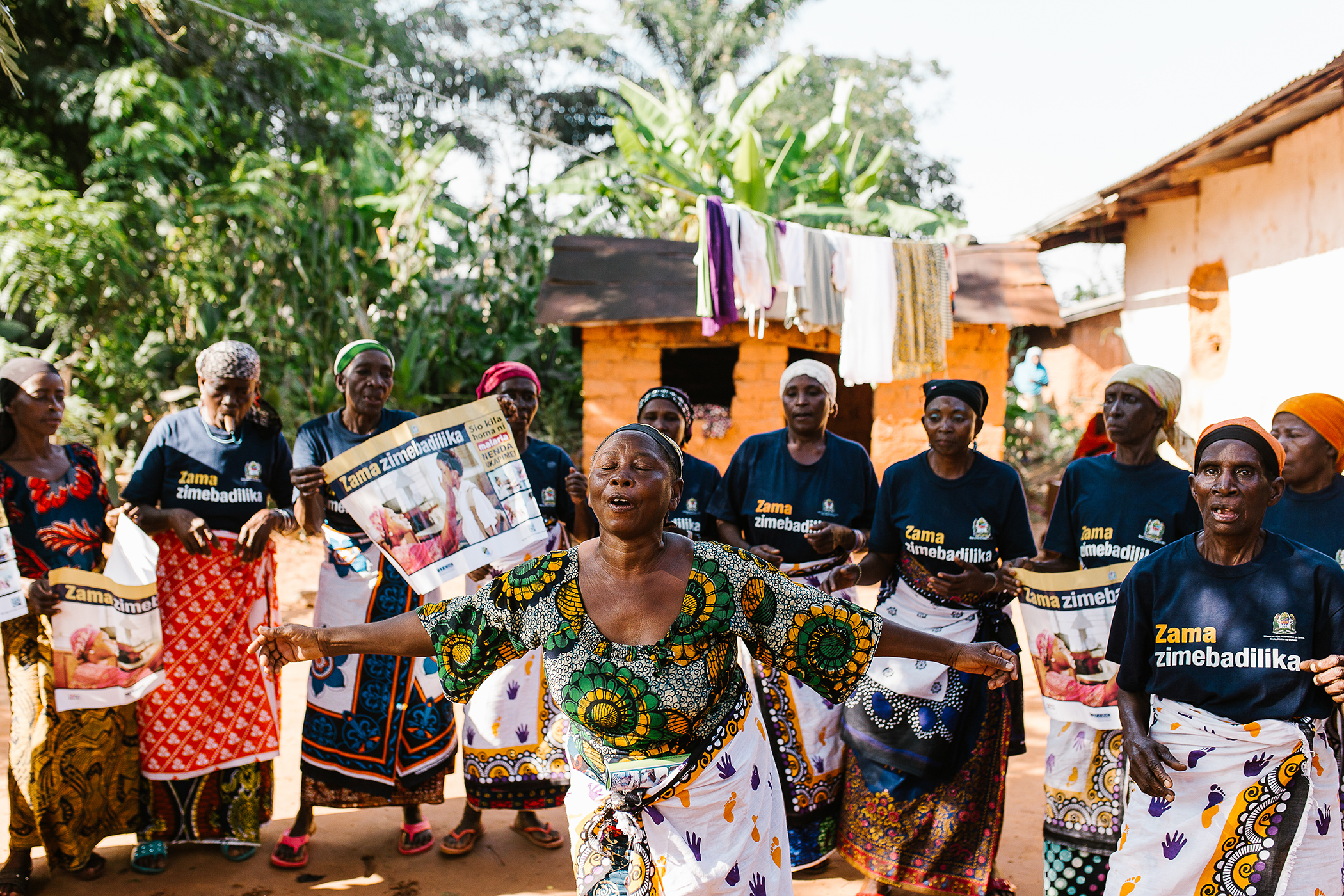Tanzania has made significant progress in the fight against malaria over the last 20 years thanks to bed nets, insecticides, and a vaccine, but new trends in the weather in East Africa seem to indicate there is a new threat to progress: climate change.
In 2021, Tanzania launched a five-year plan that aims to reduce malaria prevalence in children under 5 to less than 3.5%.
Generally, the country has a tropical climate. But from the vast Lake Victoria to the flanks of the Rift Valley, Tanzania’s features create a wide variety of climates from one region to another. For instance, the coastal lowlands regions are warm and humid, with temperatures ranging from 17 degrees Celsius to 30 degrees Celsius through most of the year. Meanwhile, the basins around Lakes Victoria (Northwest Tanzania), Tanganyika (West Tanzania), and Nyasa (South Tanzania) have relatively high temperatures, humidity, and heavier rainfall.
“The ecological settings influence malaria transmission and climate change, with more rains and humidity, might lead to increased malaria parasite transmission,” Tanzania’s Chief Medical Officer Dr. Aifello Sichwale told Global Citizen.
Malaria is spread when a female Anopheles mosquito sucks the blood of a person who has been infected with the microscopic organism plasmodium, and then feeds on the blood of an uninfected person — introducing the organism to their bloodstream. Once the organism is in the bloodstream, it can cause malaria. Consequently, malaria prevalence is closely tied to the prevalence of the mosquitoes carrying the disease from person to person.
The common symptoms of malaria include fever, headache, shaking chills, and tiredness. Quite often, a patient may develop muscle aches, nausea, and vomiting. If not treated immediately, the disease may result in kidney failure, seizures, and even death.
 A midwife at the community health center in Kigoma, Tanzania, 2019. She and her colleagues have received training and tools to combat malaria in their community. They also help pregnant women seek medical treatment as soon as they see early symptoms.
A midwife at the community health center in Kigoma, Tanzania, 2019. She and her colleagues have received training and tools to combat malaria in their community. They also help pregnant women seek medical treatment as soon as they see early symptoms.
According to the World Health Organization’s (WHO) 2020 World Malaria Report, by 2019 there were more than 229 million cases of malaria globally, with over 90% of them occurring in sub-Saharan Africa. While Tanzania contributed only 3% of the malaria cases in Africa, it represented 5% of all malaria deaths globally — the highest percentage of any single country.
Since the early 2000s, malaria prevalence in Tanzania has dropped significantly. According to the 2017 Malaria Indicator Survey, malaria prevalence in children under 5 has nearly halved, falling from 14.8% in 2015 to 7.5% in 2017. Similarly, Sichwale told Global Citizen that the School Malaria Parasitological Survey (SMPS) conducted last year found that malaria prevalence among primary school children has also nearly halved, falling from 21.6% in 2015 to 11.8% in 2021.
It’s not just that cases have been reduced by half — fewer people are dying from malaria, too, especially in older populations. The Tanzania Demographic and Health Survey notes that overall, deaths due to malaria have decreased by 71% from 6,311 in 2015 to 1,811 in 2021. For children under 5, malaria-related mortalities declined by approximately 50% between 1999 and 2016.
This success is attributed to a variety of interventions targeting mosquitoes, such as the distribution of long-lasting insecticide treated nets (LLINs) to vulnerable populations, indoor residual spraying (IRS), and larval source management. Other efforts have included extensive malaria diagnostic services, preventive therapies for pregnant women, and improving the availability of diagnostic tests and malaria medicine, so that 9 in 10 people now have access to them.
However, climate change could destabilise the positive trend in managing malaria transmission in Tanzania. Though the effects of climate change are many and complex, a rise in global temperatures and more frequent extreme weather events, such as heavy rainfall, are both to be expected. This is almost certain to have a knock-on effect on human health.
Tanzania's national climate change strategy, published 10 years ago, confirms that climate change has resulted in a significant shift in weather patterns, such as unpredictable rainfall and sporadic change in temperature. It also observes the real concern for an eruption of diseases, such as malaria, in areas like the highlands where there was once little to no malaria.
Malaria is a climate-sensitive disease. Changes in temperature, rainfall, and humidity not only influence the life cycle of the Anopheles mosquito, but also the reproductive cycle of the plasmodium organism, which causes the illness. The Tanzanian authorities are concerned that if baseline minimum temperatures continue to rise, there is a real risk that large parts of the country that currently have low transmission rates will become more at risk of disease and the potential for outbreaks.
“Low immunity in the population living in those areas might also result in increased severe morbidity and mortality. For example, Tanzania experienced a sharp increase of malaria cases in 2015 due to increased rains at the time. Malaria prevalence was on a declining trend from 2008 and increased in 2015,” Sichwale said.
When a person repeatedly becomes infected with malaria and survives, they can develop immunity to the disease. For this reason, in areas where malaria is endemic, many adults with immunity may survive infection without serious consequences. However, it remains a deadly disease, particularly for those who don’t have any form of immunity as a defense. Because climate change may result in erratic spikes in temperature and rainfall, people with no pre-existing contact (and therefore no immunity) to malaria may become infected more frequently.
This could also mean that they could be more likely to develop more serious side effects and be at greater risk of dying than someone who has survived the illness multiple times since childhood. In addition to this, until the climate stabilizes, people living in newly at-risk areas may never develop immunity because the transmission rates could vary from year to year. This means a person could remain at-risk of more serious side effects for many years because they could only develop immunity to malaria if they were regularly exposed to it.
Theoretically, if unstable temperatures caused it to be too cool for mosquitoes to breed for an extended period of time, people living in a region of oscillating temperatures may not be exposed to malaria consistently, and so any immunity to the disease might be lost. If temperatures were to spike again and the illness was to re-emerge, this would place the population at greater risk of more severe illness and death.
So far, there is limited understanding of the concrete link between malaria and climate change. Researchers in this field are cautious about drawing conclusions on the tangible influence of climate change on malaria transmission trends.
What is clear, though, is that global warming over the last century has caused temperatures to rise around the world and that mosquitoes — and therefore malaria — thrive in warm conditions.
Some studies have recorded a noticeable increase of malaria transmission in certain areas due to changes in the climate, while others report no direct connection between malaria and climate change.
A study published last year conducted in Kilimanjaro, North Tanzania, over the course of 10 years found that temperature accounted for a stronger predictor for malaria incidence when compared to other meteorological variables, such as rainfall and humidity.
 General view of the agricultural activities in Lower Moshi. According to the study at TPC Hospital, most of the area's population works on the irrigation of rice and sugarcane, creating prime conditions for breeding sites of malaria-carrying mosquitos.
General view of the agricultural activities in Lower Moshi. According to the study at TPC Hospital, most of the area's population works on the irrigation of rice and sugarcane, creating prime conditions for breeding sites of malaria-carrying mosquitos.
The study, entitled “Ten years of monitoring malaria trend and factors associated with malaria test positivity rates in Lower Moshi,” found that transmission fell if temperatures dropped below 17 degrees Celsius or rose above 32 degrees Celsius, but that temperatures of 27 degrees Celsius could support the development and survival of the malaria vector.
The monthly temperatures for Lower Moshi, where the study was conducted, during the cool months of July and August range between 16.2 degrees Celsius to 31.4 degrees Celsius, whereas during the hot months of January to March temperatures in this area range between 19.7 degrees Celsius and 35.7 degrees Celsius. Malaria test positivity rates increased with the increasing average monthly minimum temperatures, the study observed.
“What we noticed is that as soon as temperature rises to an optimal level for transmission, which is around 27 degrees Celsius, malaria cases pick up as well, whether the rainfall increases or decreases. Temperature appears to be the key determinant,” Nancy Kassam, one of researchers from the study, told Global Citizen.
While their findings don’t point to the exact mechanism of linkage between climate change and malaria, Kassam says their research certainly suggests the need for closer monitoring of change in temperature and how it affects trends of malaria transmission — more than other climatic factors, such as rainfall and humidity.
“This is a wake-up call for all stakeholders working to fight malaria. It appears a lot of efforts have been directed towards areas considered hotspots for malaria transmission like Kigoma, Tanga, Muleba. Other areas with low to almost no malaria have sort of been abandoned,” Kassam explained. “But now we need to continue monitoring areas where malaria is almost eliminated because there is a danger of rebound of transmission in these areas because we know climate change is happening.”
Researchers have long established that an increase in temperature in higher altitudes may also cause an increase of the malaria-carrying mosquitoes. That is why there has been an increase in malaria transmission in areas that earlier had either a small number of cases or none at all. On the other hand, an increase of temperature in lower altitudes that already had large numbers of malaria will change the growth cycle of the mosquito parasite, enable it to develop faster, and consequently increase malaria transmission.
“There is a need to create an organ or mechanism to predict how things may look like in future. At the moment, for instance, we use as old as 10-year-old data regarding climate change and its connection with malaria,” said Dr. Leonard Mboera, leader, Community of Practice on Emerging and Vector-Borne Diseases at SACIDS Foundation for One Health, in Morogoro, Tanzania.
 Moshi sits at the foot of Mount Kilimanjaro in Northern Tanzania.
Moshi sits at the foot of Mount Kilimanjaro in Northern Tanzania.
Mboera says it may be slightly difficult to get a clear picture of the possible impact of climate change on malaria transmission because of the significant decrease of malaria cases across the country.
Other researchers have also cautioned that because there are many other human activities such as deforestation, irrigation, and swamp drainage that have impact on local ecology, it may be difficult to accurately quantify the impact of climate change on malaria transmission.
As surveillance and preparedness for malaria control may not be at the level it was when the disease was regarded as a top public health concern, the concern among public health practitioners is that the country may not have enough resources — or time — to combat the reintroduction or increase of malaria transmission.
The Global Fund's seventh replenishment will be hosted by the United States in September. It will provide donors with the opportunity to take bold action to protect everyone, everywhere from AIDS, TB, and malaria. The goal is to raise $18 billion to save 20 million lives and get the world back on track to achieve the target of defeating the three diseases. Learn more and take action here.
This content is part of a series that was made possible by funding from the Bill & Melinda Gates Foundation.


